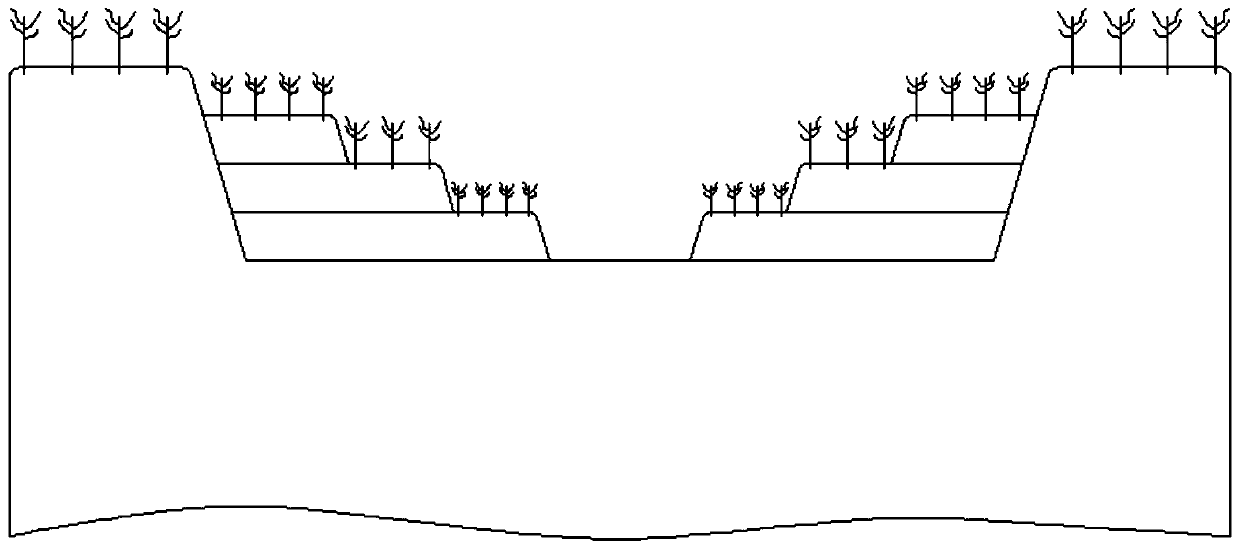Restoration method of damaged plants in coastal wetland
A technology for vegetation restoration and wetlands, applied in land preparation methods, botanical equipment and methods, plant cultivation, etc., can solve problems such as insufficient environmental protection and soil damage, and achieve the effects of low cost, soft soil, and increased organic matter content
- Summary
- Abstract
- Description
- Claims
- Application Information
AI Technical Summary
Problems solved by technology
Method used
Image
Examples
Embodiment 1
[0029] A method for restoring damaged vegetation in coastal wetlands, comprising the steps of:
[0030] S1. Determine the restoration area and conduct habitat survey: conduct a comprehensive understanding of the state of the target wetland before damage, the cause of damage, and the degree of human interference during the restoration process, so as to select the area that needs ecological restoration; the second is to carry out Habitat survey, including a comprehensive survey of the climatic conditions, soil conditions, water resources, vegetation, animal and plant resources of the target wetland;
[0031] S2. Water pumping transformation: determine the area that needs to be restored ecologically, set a cut-off baffle around the area, use a pump to pump out the water in the area, and move along the two sides of the water flow direction in the area Slope reconstruction forms multiple steps of different heights to form multi-level wetland ecosystem units. Living wetland vegetati...
Embodiment 2
[0038] A method for restoring damaged vegetation in coastal wetlands, comprising the steps of:
[0039]S1. Determine the restoration area and conduct habitat survey: conduct a comprehensive understanding of the state of the target wetland before damage, the cause of damage, and the degree of human interference during the restoration process, so as to select the area that needs ecological restoration; the second is to carry out Habitat survey, including a comprehensive survey of the climatic conditions, soil conditions, water resources, vegetation, animal and plant resources of the target wetland;
[0040] S2. Water pumping transformation: determine the area that needs to be restored ecologically, set a cut-off baffle around the area, use a pump to pump out the water in the area, and move along the two sides of the water flow direction in the area Slope reconstruction forms multiple steps of different heights to form multi-level wetland ecosystem units. Living wetland vegetatio...
Embodiment 3
[0047] A method for restoring damaged vegetation in coastal wetlands, comprising the steps of:
[0048] S1. Determine the restoration area and conduct habitat survey: conduct a comprehensive understanding of the state of the target wetland before damage, the cause of damage, and the degree of human interference during the restoration process, so as to select the area that needs ecological restoration; the second is to carry out Habitat survey, including a comprehensive survey of the climatic conditions, soil conditions, water resources, vegetation, animal and plant resources of the target wetland;
[0049] S2. Water pumping transformation: determine the area that needs to be restored ecologically, set a cut-off baffle around the area, use a pump to pump out the water in the area, and move along the two sides of the water flow direction in the area Slope reconstruction forms multiple steps of different heights to form multi-level wetland ecosystem units. Living wetland vegetati...
PUM
 Login to View More
Login to View More Abstract
Description
Claims
Application Information
 Login to View More
Login to View More - R&D
- Intellectual Property
- Life Sciences
- Materials
- Tech Scout
- Unparalleled Data Quality
- Higher Quality Content
- 60% Fewer Hallucinations
Browse by: Latest US Patents, China's latest patents, Technical Efficacy Thesaurus, Application Domain, Technology Topic, Popular Technical Reports.
© 2025 PatSnap. All rights reserved.Legal|Privacy policy|Modern Slavery Act Transparency Statement|Sitemap|About US| Contact US: help@patsnap.com

